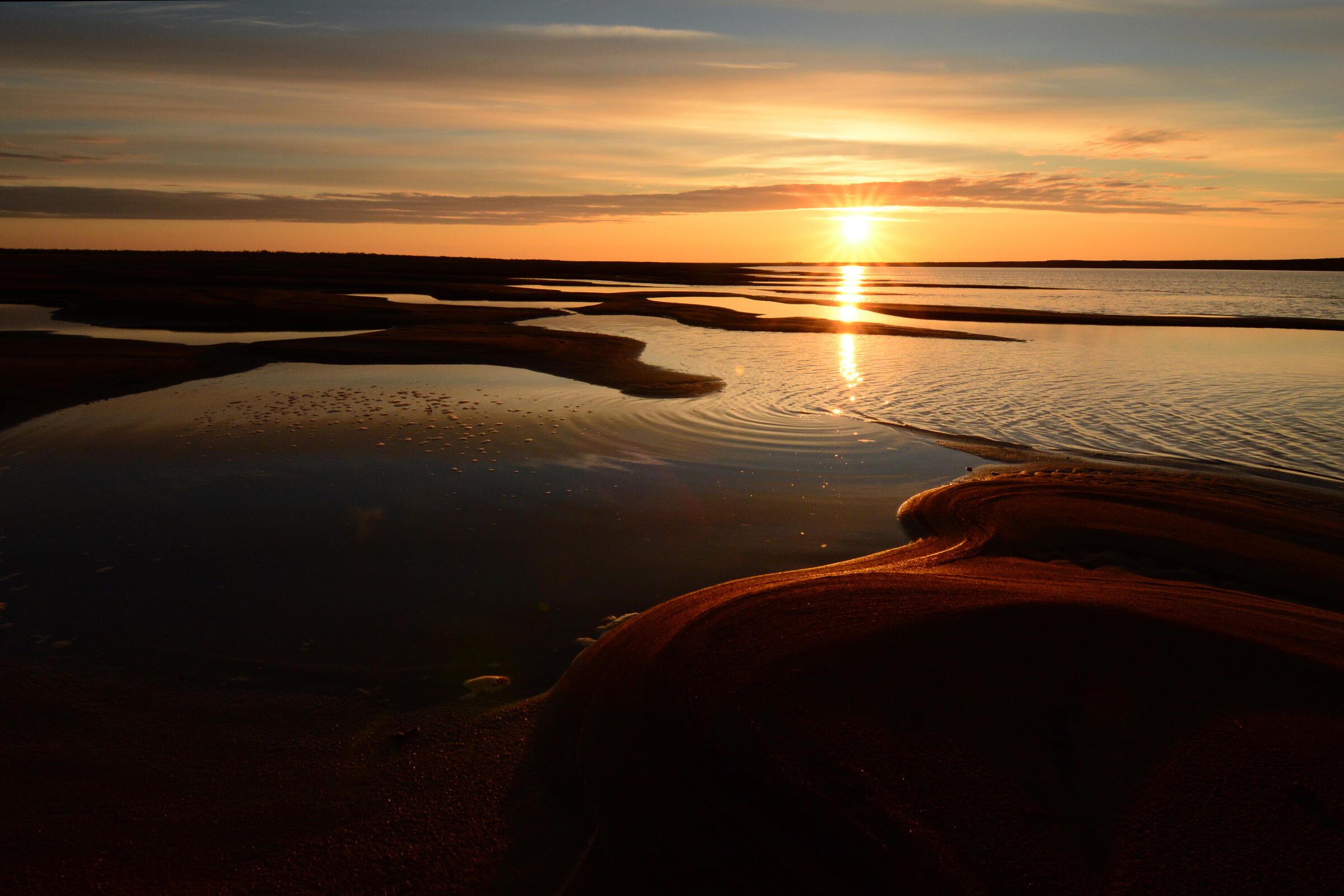The 2.44-million-acre Colville River Special Area is the largest river in Arctic Alaska and stretches for 300 miles across the southeastern border of the 23-million-acre National Petroleum Reserve–Alaska.
Importance to Birds
“The Colville River Special Area is the location of what is likely the highest-density raptor nesting area in the Circumpolar Arctic—Peregrine Falcons, Rough-legged Hawks, and Golden Eagles galore,” says Melanie Smith, former Director of Conservation Science for Audubon Alaska. “Those species are long-distance migrants, so that connects this place to many, many other places far away and makes it part of the fabric of connected, protected, or unprotected areas that these species are relying on.”
Dr. John Schoen, a retired wildlife ecologist who spent 14 years as the senior scientist for Audubon Alaska, agrees. “Probably nowhere else in the entire circumpolar Arctic can one find such a diversity and density of nesting raptors,” he says.
The river delta supports 68 regularly breeding bird species as well as 22 overwintering fish species and is a major haulout site for spotted seals. The river corridor is used by caribou, moose, wolf, and grizzly bear. The Colville Special Area is also home to the Liscomb Bone Bed - the most prolific single deposit of dinosaur fossils on earth.
Management of Colville River
The current area-wide management plan for the National Petroleum Reserve-Alaska places several designated Special Areas, such as the Colville River Special Area, off-limits for oil and gas leasing. This plan provides a responsible balance that protects ecologically sensitive areas while still allowing energy development to occur in less sensitive areas.
How you can help, right now
Donate to Audubon
Help secure the future for birds at risk from climate change, habitat loss and other threats. Your support will power our science, education, advocacy and on-the-ground conservation efforts.
1% for the Planet
We are proud to be part of the 1% for the Planet network. If you own a business, please consider joining 1% for the Planet to support Audubon Alaska’s conservation efforts.





